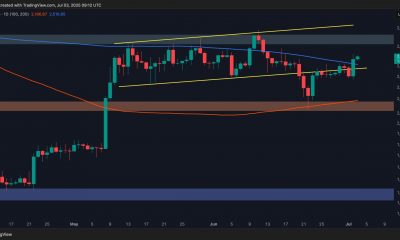Commodities
Oil prices push higher as Saudi, Russian cuts spell tighter supply


© Reuters.
Investing.com– Oil prices rose further in Asian trade on Wednesday, sticking to 10-month highs as bigger-than-expected supply cuts by Saudi Arabia and Russia pointed to tighter supplies this year.
Prices extended bumper gains from the prior session, after Saudi Arabia said it will extend its current 1 million barrel per-day cut until end-December, while Russia will maintain its 300,000 barrel per-day export curbs until the end of the year. The two will also review the cuts on a monthly basis, and adjust them according to market conditions.
The move blindsided markets, given that analysts were looking at an extension of Saudi and Russian curbs until only end-October. But global oil markets are now set to tighten substantially this year, especially if demand remains steady.
expiring in November rose 0.1% to $90.24 a barrel, while expiring in October rose 0.3% to $86.93 a barrel by 20:36 ET (00:36 GMT). Both contracts were at their highest level since mid-November.
Supply cuts help offset economic gloom, rate uncertainty
Tuesday’s supply cuts helped markets largely look past concerns over sluggish demand in China, after a series of mixed economic readings from the world’s largest oil importer.
Oil prices also largely disregarded pressure from a stronger , as the greenback hit a near six-month high before a string of Federal Reserve speakers this week.
Concerns over slowing Chinese demand and higher-for-longer U.S. rates had chipped away at oil prices this year, as a Chinese economic recovery stalled and as the Fed largely maintained its hawkish rhetoric.
This had driven oil prices to as low as $70 a barrel, which was what drove Saudi Arabia into cutting production and supporting prices. The Kingdom, along with Russia, announced a series of production cuts since April, which in turn helped oil prices trade positive for the year. Brent and WTI are both up around 10% for 2023.
But the spike in oil prices somewhat weighed on broader market sentiment, as investors feared a resurgence in inflation from higher fuel costs, which could in turn weigh on the global economy.
Brent, WTI in backwardation as markets see near-term tightness
The two most traded oil contracts were trading at a premium to contracts expiring later in the year. For instance, expiring in December were at $89.51 a barrel, while expiring in November were at $86.15 a barrel.
Such a phenomenon is known as backwardation, and indicates that the near-term demand for oil, particularly for immediate deliveries, is expected to be far more than demand later in the year.
Commodities
Oil prices rise; U.S. crude inventories plunge, Russia-Ukraine truce eyed
Commodities
India’s Reliance to stop buying Venezuelan oil over US tariffs, sources say
Commodities
Oil prices climb on Venezuela supply worries

 Forex3 years ago
Forex3 years agoForex Today: the dollar is gaining strength amid gloomy sentiment at the start of the Fed’s week

 Forex3 years ago
Forex3 years agoUnbiased review of Pocket Option broker

 Forex3 years ago
Forex3 years agoDollar to pound sterling exchange rate today: Pound plummeted to its lowest since 1985

 Forex3 years ago
Forex3 years agoHow is the Australian dollar doing today?

 Cryptocurrency3 years ago
Cryptocurrency3 years agoWhat happened in the crypto market – current events today

 World3 years ago
World3 years agoWhy are modern video games an art form?

 Commodities3 years ago
Commodities3 years agoCopper continues to fall in price on expectations of lower demand in China

 Economy3 years ago
Economy3 years agoCrude oil tankers double in price due to EU anti-Russian sanctions































